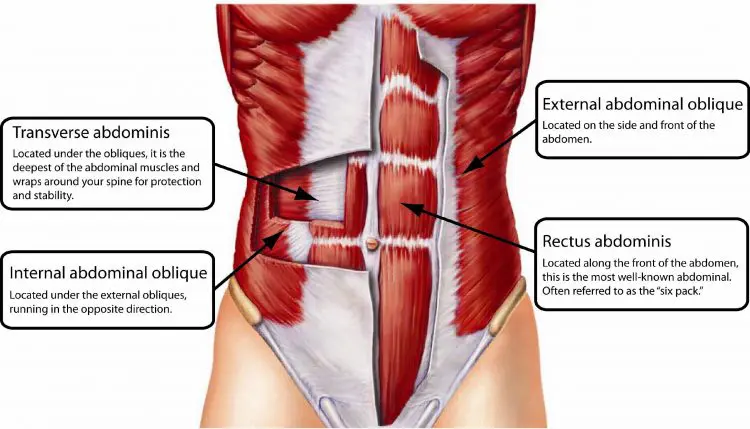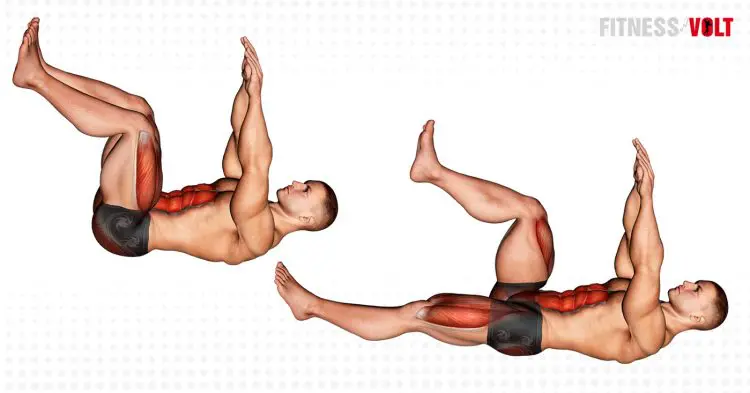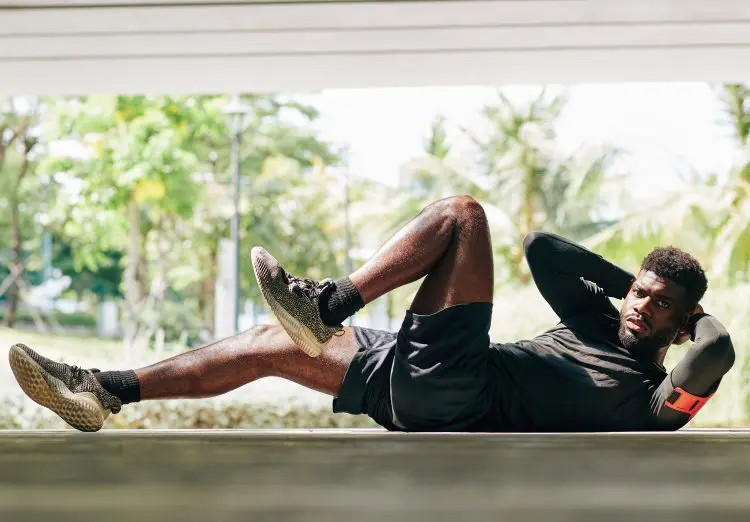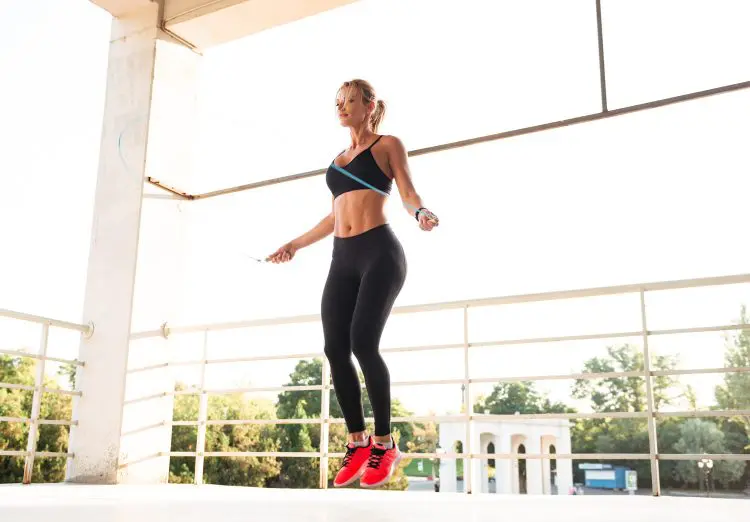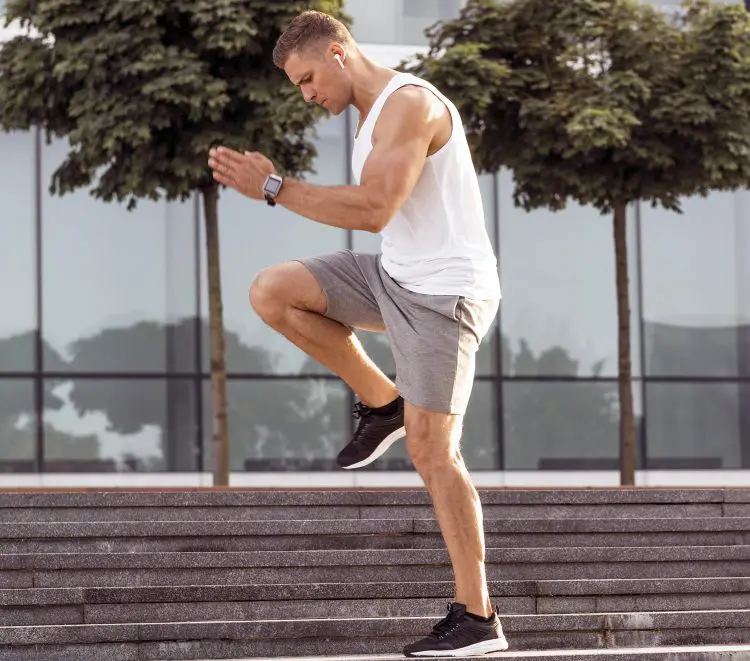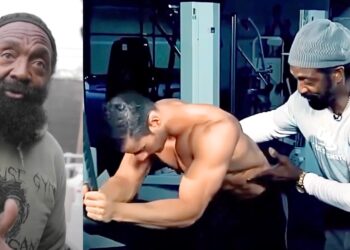When it comes to core training, a lot of people are confused. They think that a few sets of sit-ups are all that’s need to strengthen their core muscles. Or that doing 100 crunches every morning is the way to sculpt a six-pack.
Needless to say, those same people are usually frustrated by their complete lack of progress!
Instead, to sculpt an impressive midsection, you need to adopt a multi-dimensional approach to your core workouts. While high-rep sets of crunches DO work one of your abdominal muscles, several of your other core muscles are unaffected by this exercise. And if you can do more than 20 or so reps of any core exercise, it’s probably not hard enough to be very useful.
Our 30-minute outdoor ab workout has been designed to leave no part of your core untrained. And, as an added benefit, it will also burn calories and fat so that, as your muscles get stronger, you shed that layer of fatty tissue that’s currently obscuring your abs. It’ll boost your fitness too.
Best of all, for this all-encompassing workout, you don’t need any workout equipment except a jump rope and an exercise mat. That means you can do this workout anywhere and anytime – even outdoors.
But, before we get into the details of the workout, let’s do a quick revision session on basic core anatomy and physiology so you can see just how comprehensive this workout really is!
Level Up Your Fitness: Join our 💪 strong community in Fitness Volt Newsletter. Get daily inspiration, expert-backed workouts, nutrition tips, the latest in strength sports, and the support you need to reach your goals. Subscribe for free!
Core Anatomy 101
A lot of people think that core is just another word for your abs, which is short for rectus abdominis, the muscle on the front of your stomach. While rectus abdominis IS one of the core muscles, it’s not the only one. Training just your abs leaves several equally important muscles untouched.
Instead, a good core training program should work all of the muscles that make up your midsection. Those muscles are:
Rectus abdominis – your abs are responsible for flexing your spine. It can pull your sternum down toward your pelvis or lift your pelvis up toward your sternum. There is no such thing as upper or lower abs, but these two different movements make it feel like there are.
Your abs are also split down the middle by a fibrous band of tissue called the linea alba, which literally means white line. Because of this separation, you can contract one side of your rectus abdominus at a time. Subsequently, your abs are also involved in lateral flexion of your spine. This means they bend you sideways as well as forward.
Internal and external obliques – the obliques are located on either side of your rectus abdominis. In a way, they “frame” your abs. There are two different oblique muscles; the internal and external obliques. The external obliques are the largest of the core muscles, while the internal obliques are smaller and located underneath.
The obliques are responsible for the rotation and lateral flexion of your spine. In other words, they turn and bend your spine from side to side.
Transverse abdominis – this hidden muscle is potentially your most important core muscle. You can’t see it, but you’ll definitely feel it working. Known as TVA for short, your transverse abdominis is a deep abdominal muscle that encircles your abdomen like a weightlifting belt. When contracted, your TVA compresses your abdominal contents to create intra-abdominal pressure or IAP. IAP stabilizes your spine and pelvis from within.
Bracing activates your TVA. To brace, you pull up your pelvic floor like you were trying to stop the flow of urine, contract (but don’t pull in) your abs like you were about to get punched in the gut, and inhale. If you’ve done it right, you should feel your entire midsection solidify and feel strong.
You should brace any time you lift anything heavy, and bracing will increase core muscle activation during this workout too.
Erector spinae – this is the collective term for the muscles of your back. There are eight erector spinae muscles, and they’ve all got pretty complicated names:
- Iliocostalis: lumborum, thoracis, cervicis
- Longissimus: thoracis, cervicis, capitis
- Spinalis: thoracis, cervicis, capitis
- Semispinalis: thoracis, cervicis, capitis
- Multifidi
- Rotatores: thoracis longus, thoracis brevis
- Interspinales
- Intertransversarii
Despite being on the back of your body, these muscles play an essential part in the function and appearance of your midsection. These muscles are responsible for extending your spine and also play a role in lateral flexion and rotation. They are also important for posture, as they hold your spine upright against the pull of gravity.
Good posture instantly improves how you look and feel. Just sit or stand up straight, and your stomach looks flatter! Plus, good posture takes stress off the passive structures of your spine, such as the intervertebral discs and spinous ligaments, reducing your chances of back pain.
The Best 30-Minute Outdoor Ab Workout
Now you know the muscles you’ll be training in our outdoor ab workout, it’s time to get busy and start training! But, before you dive into the main part of the workout, you need to spend a few minutes warming up. This will prepare your body and your mind for what is to come.
Grab your jump rope and start skipping. Do three to five minutes, or until you begin to feel warm and slightly out of breath. Make sure your jump rope is the right length by standing on the middle with your feet together. The handles should just reach your armpits.
If the rope is too long, you can shorten it by tying a few knots. If your rope is too short, discard it and get a longer one. A properly sized jump rope is much easier to use than one that’s too long or too short.
As you jump rope, try to stay light on your feet and only jump just high enough for the rope to pass under you. After all, the rope is a fraction of an inch thick, so there is no need to jump very high.
Try jumping with your feet together, a heel-toe action, and jogging on the spot. If you’re feeling fit and feisty, after a few minutes, you can even do some high knee sprints or double-unders – that’s two rope turns per jump.
Once you are warmed up, mobilize your spine and hips with some easy bodyweight squats and lunges, and waist twists and side bends. Finish off your warm-up with a few chest press and overhead press movements to mobilize your shoulders.
You should now feel warm, loose, and ready to train!
Do 45-seconds of each of the following core exercises and then jump rope for three minutes. Do three laps to total 30 minutes.
| Exercise | Duration | Rest | |
| 1 | Dead bug | 45 | 15 |
| 2 | High bird dog | 45 | 15 |
| 3 | Bicycle crunch | 45 | 15 |
| 4 | T-push-up | 45 | 15 |
| 5 | Skydiver back extension | 45 | 15 |
| 6 | Reverse crunch | 45 | 15 |
| 7 | Sit-through | 45 | 15 |
| 8 | Jump rope | 3-minutes | N/A |
[Read also: Savage Calisthenics Abs Workouts For Beast Gains]
Exercise Descriptions/Instructions
To get the most from this or any other workout, it is critical that you do each exercise correctly. This will ensure that you get the best possible results while keeping your injury risk as low as possible. Perform each exercise smoothly and with control, and never sacrifice proper form for being able to pump out a couple of extra reps.
1. Dead bug
The dead bug is not an especially hard exercise, but it’s an important one. Dead bugs teach you to brace your core while you move your arms and legs.
Think of this exercise as a wake-up call for your core before moving onto the rest of the workout. Focus on contracting and bracing your midsection hard as you raise and lower your arms and legs.
Read more about the dead bug exercise.
2. High bird dog
The high bird dog is an advanced variation of the standard bird dog. With the standard version, you start on your hands and knees. With the high bird dog, you’ll be working from the push-up position. If high bird dogs are too challenging for you right now, feel free to do the less intense standard version.
Bird dogs are an isometric exercise, which means you have to work hard to keep your lumbar spine and pelvis still as you lift your arms and legs. You should feel this exercise in your rectus abdominus and your obliques. Make sure you brace hard to maintain proper lumbar spine alignment.
Level Up Your Fitness: Join our 💪 strong community in Fitness Volt Newsletter. Get daily inspiration, expert-backed workouts, nutrition tips, the latest in strength sports, and the support you need to reach your goals. Subscribe for free!
Read more about the high bird dog plank.
3. Bicycle crunch
The bicycle crunch works your rectus abdominis and obliques, as well as your hip flexors and your rectus femoris, which is one of your quadriceps or thigh muscles.
This makes it a very time efficient as well as an effective core exercise. Take care not to pull on your head or neck when doing this exercise; that’s a good way to end up getting hurt. Instead, rest your fingers on your temples.
Read more about the bicycle crunch abdominals.
4. T-push-up
Most people do not associate push-ups with core training, and yet, push-ups do involve a lot of core activation. After all, your core muscles have to work hard to keep your body straight and true as you pump out your reps.
This push-up variation is even more core-centric and provides both your rectus and obliques with a good workout. And yes, they still work your chest, shoulders, and triceps too!
How to do it:
- Adopt the push-up position with your arms and legs straight. Your hands should be about shoulder-width apart.
- Bend your arms and lower your chest to within an inch of the floor.
- Extend your arms and lift one hand off the floor. Rotate your upper body and point that arm straight up to the ceiling. Your body should resemble a T-shape on its side.
- Return your hand to the floor, do another push-up, and then raise the other arm.
- Keep alternating sides for the duration of your set.
5. Skydiver back extension
After four anterior and lateral core exercises in a row, your abs are ready for a rest! This exercise works your erector spinae, so as well as acting as a form of active recovery, it also strengthens your back, glutes, and even the muscles between your shoulders. It’s the perfect antidote to all that spinal flexion.
How to do it:
- Lie on your front with your forehead resting on the floor. Bend your arms and place your palms flat, so they’re roughly level with your ears.
- Lift your head, arms, and legs a few inches off the floor. Pull your shoulders down and back to contract the muscles between your shoulders.
- Lie back on the floor and repeat.
- Take care not to hyperextend your spine by lifting your legs too high.
6. Reverse crunch
Reverse crunches work your rectus abdominus. While there is no such thing as upper or lower rectus abdominus, you’ll probably feel this exercise working your abs below your naval.
This is because, with this core exercise, you’ll be lifting your hips instead of your shoulders. Do this exercise with bent legs for a medium-intensity workout or with your legs straight to make it harder.
Read more about the reverse crunch abdominals.
7. Sit-through
Sit-throughs work your abs and obliques. They’re a fun exercise because they involve lots of movement, and they look pretty cool too.
Sit-throughs are a popular MMA exercise, and as well as working your core, they also use your shoulders and arms. You should find this exercise increases your heart and breathing rate too.
How to do it:
- Kneel down and place your hands flat on the floor. Lift your knees a few inches of the floor, so you are in a quadruped position. Your hands should be directly beneath your shoulders and your knees beneath your hips. Brace your core.
- Rotate your upper body, so you are resting on your right arm only. Swing your right leg under your body and touch your bent knee to your left elbow.
- Return to the quadruped position and repeat on the opposite side.
8. Jump rope
Jumping rope is your active recovery from all those core exercises and your chance to crank up your heart and breathing rate and burn some fat.
There is no need to go flat out, but you should jump rope fast enough that you feel moderately out of breath. Consider doing one slow, one medium, and one fast minute. Alternatively, you can maintain the same speed for all three minutes.
Not much of a rope jumper? No problem! As this is an outdoor ab workout, you could go for a quick run or just do some shadow boxing or jumping jacks.
Outdoor Ab Workout FAQs
While we’ve tried to make this workout as clear and understandable as possible, we know some of you will still have questions. In this section, we will answer the most common queries about this workout and core training in general.
How can I make this workout easier?
This outdoor ab workout is quite challenging. After all, it’s 30 minutes of intense core and cardio training. It’s aimed at intermediate and advanced exercisers.
Does that mean beginners should scroll on by? Absolutely not! You can make this workout easier and more manageable for beginners by:
- Shortening the work periods – do 30 or even 20 seconds of each exercise instead of the prescribed 45.
- Rest longer between exercises – take 20 to 30-second breaks instead of 15.
- Do fewer laps – you don’t need to do all three laps. Try two or even one if the full three laps are too challenging right now.
- Choose easier exercises – if things like high bird dogs, T-push-ups, and sit-throughs are too hard for you at the moment, seek out similar but easier exercises and do them instead. For example, you could do side planks instead of T push-ups or regular bird-dogs instead of high bird dogs.
- Do fewer exercises – this workout contains seven challenging core exercises. Whittle it down to six, five, or even four exercises to make it easier.
- Jump rope for less time – if the idea of jumping rope is too daunting, you could do two or even just one minute to make this workout easier.
How can I make this workout harder?
If this workout is not challenging enough, try any of the following modifications:
- Eliminate the rests – instead of taking 15 seconds between exercises, go straight from one to the next. They’re all bodyweight movements, so you should not need much if any transition/setup time between each one.
- Do more laps – don’t stop at three laps; do four or even five laps to make your workout more demanding.
- Spend longer on each exercise – progress from 45 seconds to 60 seconds or more per exercise.
How often should I do this workout?
Ideally, you should do this outdoor ab workout two to three times per week on non-consecutive days, e.g., Monday and Thursday, or Monday, Wednesday, and Friday.
This provides a good balance between training and recovery. While you could do it more often than this, we don’t recommend it, as recovery and rest are every bit as important as training for making progress.
Will this outdoor ab workout burn fat?
We’ve designed this core workout as a circuit, which means you’re going to move quickly from one exercise to the next. This will increase your heart and breathing rate, as well as working your midsection muscles. There is also a three-minute jump rope section at the end of each circuit.
This all means that our outdoor ab workout will indeed burn fat. However, you’ll only get leaner if you watch what you eat and create a calorie deficit. If you don’t, despite burning calories and fat during your workout, you won’t get any leaner.
How many reps should I do of each exercise?
This is a timed circuit, so just do as many reps as you can in the allotted time. If you are fit, you may end up doing a lot of reps before your timer buzzes. Less fit exercisers will do fewer reps. It doesn’t matter that much how many you do, so long as you work as hard as you can. And, however many reps you do today, you should try and pump out a few more the next time you do this workout.
One of the exercises hurts my back/elbows/knees/hips – what should I do?
While muscle pain is normal, and to be expected, joint pain is not. If you feel pain in your back, neck, hips, etc., during this workout, you should stop and review the exercise instructions. If you are doing the exercise correctly, and it still hurts, seek out an alternative that isn’t painful.
When is the best time to do this outdoor ab workout?
Some experts believe that the best time to exercise for fat loss is first thing in the morning on an empty stomach.
While that might be true, many exercisers don’t feel especially strong or energetic at that time, and any fat-burning benefit is negated by reduced workout performance. Ultimately, the best time to work out is the time that works for you and when you can perform at your best.
Wrapping Up
This workout proves that you don’t need a lot of fancy equipment or even a whole lot of time to burn fat, get fit, and strengthen your core. Armed with nothing more than a jump rope and an exercise mat or folded towel, you can train your core almost anywhere and anytime – even outdoors.
It’s very easy to make excuses not to work out, and lack of time and no facilities are two of the most common reasons not to exercise. But, with this workout, all those excuses vanish!
Take our 30-minute outdoor ab workout for a spin; you’re going to LOVE it!

